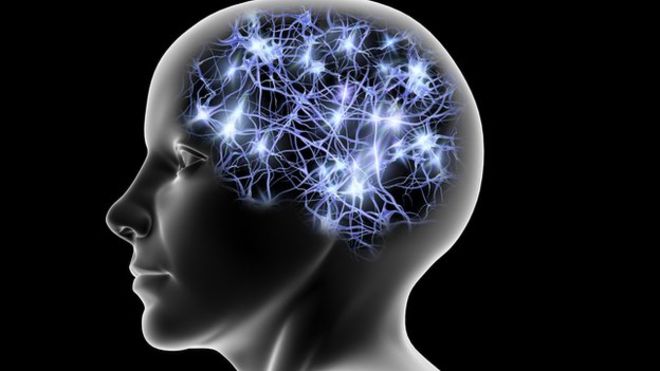Everything in the Evil 'Knowing'
Consciousness populates reality. The basis of the universe is that it is merely a peculiar characteristic of a person's subjective experience, that is, there are particles and all physical things. This seems to be an unacceptable empty head, but as the traditional attempts to explain the consciousness continue to fail, the "panpsist" view has become increasingly taken seriously by philosophers, neuroscientists and physicists, neuroscientist Christof Koch and physicist Roger Penrose .
"Philip Goff, a professor of philosophy at the Central European University in Budapest, says," Why should we think that common sense is a good guide to what the universe looks like? " "Einstein tells strange things about the nature of time that appeals to common sense; Quantum mechanics oppose common sense. Our intuitive response is not necessarily a good guide for the nature of reality. "
David Chalmers, a professor of mind at the University of New York, showed the "difficult problem of consciousness" in 1995 and showed that consciousness is still unanswered because of what is causing it. Traditionally, two dominant perspectives, materialism and dualism have provided a framework for solving this problem. They both cause confusion that seems to be inexcusable.
"Physics is just one structure. It can explain the biology, but there is a gap: Consciousness. "
The materialist point of view indicates that consciousness is made entirely of physical material. However, it is not known exactly how it works. Chalmers says, "Consciousness is very difficult to get out of your unconsciousness." "Physics is just one structure. Biology can explain biology, but there is a vacuum: Consciousness. "Dualism assumes that consciousness is separate from physical material - but it reveals the question of how consciousness interacts and its effect on the physical world.

Panpsisism offers an effective alternative solution. Consciousness is an essential feature of physical matter; Goff says that every piece of existence has a "simple in mind" concept. These particles then come together to form more complex forms of consciousness, such as the subjective experiences of humans. Pansisism does not mean that every inanimate object is conscious of the province.
Philosophers in NYU, who host one of the leading mind philosophy departments, have made pangsysmith a serious field of study. In recent years there have been several reliable academic books on the topic and popular articles on pangsism. Giulio Tononi's Integrated Knowledge Theory, one of the most popular and reliable theories of contemporary neuroscience on the subject of consciousness, also contributes to the status of panpsisisme.
Tononi argues that if the information in the building is sufficiently "integrated" or united, something will have the form of "consciousness" and that it will be more than the sum of its parts. This is true not only for the human brain, but for all structures. The Integrated Information Theory advocates the view that physical material has innate conscious experimentation. Goff, who wrote an academic book on consciousness and addressed the subject from a more popular science perspective, notes that reliable theories are based on the 1920s. They think that philosopher Bertrand Russell and physicist Arthur Eddington are involved, they think panpsisism is necessary, but this area has lost momentum after World War II, when the philosophy focuses heavily on analytical philosophical language and logic questions. Alan started to get interested again in the early 2000s.
"The physical sciences tell us much less about the nature of the material than we thought we were," says Goff. Eddington thinks that there is a gap in the picture that the universe revives. "We know what the material does, but we do not know what it is. We can put consciousness in this void. "The biggest problem in panpsisism is known as the" combination problem ": does exactly the small particles of consciousness collectively form a more complex consciousness? Consciousness may exist in all particles, but it does not answer how these conscious particles of small particles come together to create a more complex experience of human consciousness.
Any theory that attempts to answer this question will effectively determine which complex systems will be consciously counted, from inanimate objects to plants.
An alternative panpsist point of view is that the universe is conscious, as a whole, from the individual particles that hold the consciousness and come together. This tells us that Goff is not the same as believing that the universe is a unified divine being; it would be better to see it as a "cosmic mess." Nonetheless, it reflects a perspective that the world is constructed from the smallest particles and that the whole is from a single point of view, and that everything is derived from the environment, that is, it is an entirely creative creation. The finding that Goff deals with as a single unified system, even when some particles are separated by such tremendous distances, are seen as the very basic functions of the universe as a collection of discrete fragments.
Such theories seem incredible, and perhaps so. Chalmers says, "How much I think about any theory, it also includes probabilities." "One begins as a materialist, then a dualist, then a psychiatrist, then an idealist," he adds. Idealism assumes that conscious experience is the only thing that really exists. In this respect, panpsisism is rather moderate.
Chalmers, a colleague of philosopher John Perry, quotes: "If you think enough of your consciousness so far, you either panic or become a manager."
thank you for reading%)>